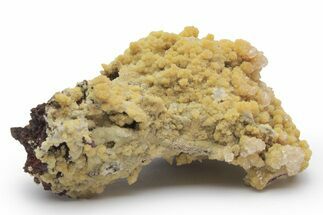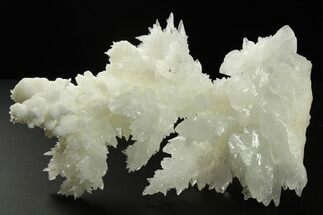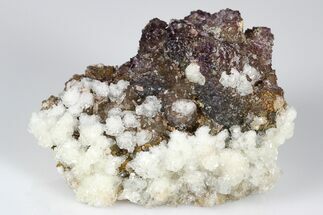This Specimen is on hold.
1.5" Vibrant-Red Cinnabar with Quartz - Cocineras Mine
This is a beautiful association of vibrant-red cinnabar and quartz crystals, collected from the Cocineras Mine in the Santa Eulalia mining district of Chihuahua, Mexico.
Cinnabar is a mercury sulfide mineral with the chemical formula HgS. It is a vibrant red color and is an important ore of mercury. It is primarily found as fillings within gaps of rocks and coating rocks as a result of ascending hydrothermal activity. While cinnabar is typically massive in habit, large crystals have been found on rare occasions. The striking red color of cinnabar made for an attractive pigment, but its use as a pigment was halted following discovery of its toxic properties.
Toxicity Warning: The mercury content of cinnabar can be harmful if absorbed into the bloodstream by inhalation or ingestion. The crystals do not pose a health hazard just sitting on a shelf, but it is highly recommended that you wear gloves and/or wash your hands after handling.
Toxicity Warning: The mercury content of cinnabar can be harmful if absorbed into the bloodstream by inhalation or ingestion. The crystals do not pose a health hazard just sitting on a shelf, but it is highly recommended that you wear gloves and/or wash your hands after handling.
About Quartz
Quartz is the name given to silicon dioxide (SiO2) and is the second most abundant mineral in the Earth's crust. Quartz crystals generally grow in silica-rich environments--usually igneous rocks or hydrothermal environments like geothermal waters--at temperatures between 100°C and 450°C, and usually under very high pressure. In either case, crystals will precipitate as temperatures cool, just as ice gradually forms when water freezes. Quartz veins are formed when open fissures are filled with hot water during the closing stages of mountain formation: these veins can be hundreds of millions of years old.
Quartz is the name given to silicon dioxide (SiO2) and is the second most abundant mineral in the Earth's crust. Quartz crystals generally grow in silica-rich environments--usually igneous rocks or hydrothermal environments like geothermal waters--at temperatures between 100°C and 450°C, and usually under very high pressure. In either case, crystals will precipitate as temperatures cool, just as ice gradually forms when water freezes. Quartz veins are formed when open fissures are filled with hot water during the closing stages of mountain formation: these veins can be hundreds of millions of years old.
$19
SPECIES
Cinnabar & Quartz
LOCATION
Cocineras Mine, Santa Eulalia Mining District, Chihuahua, Mexico
SIZE
1.5 x 1.2"
CATEGORY
ITEM
#319962
 Reviews
Reviews












